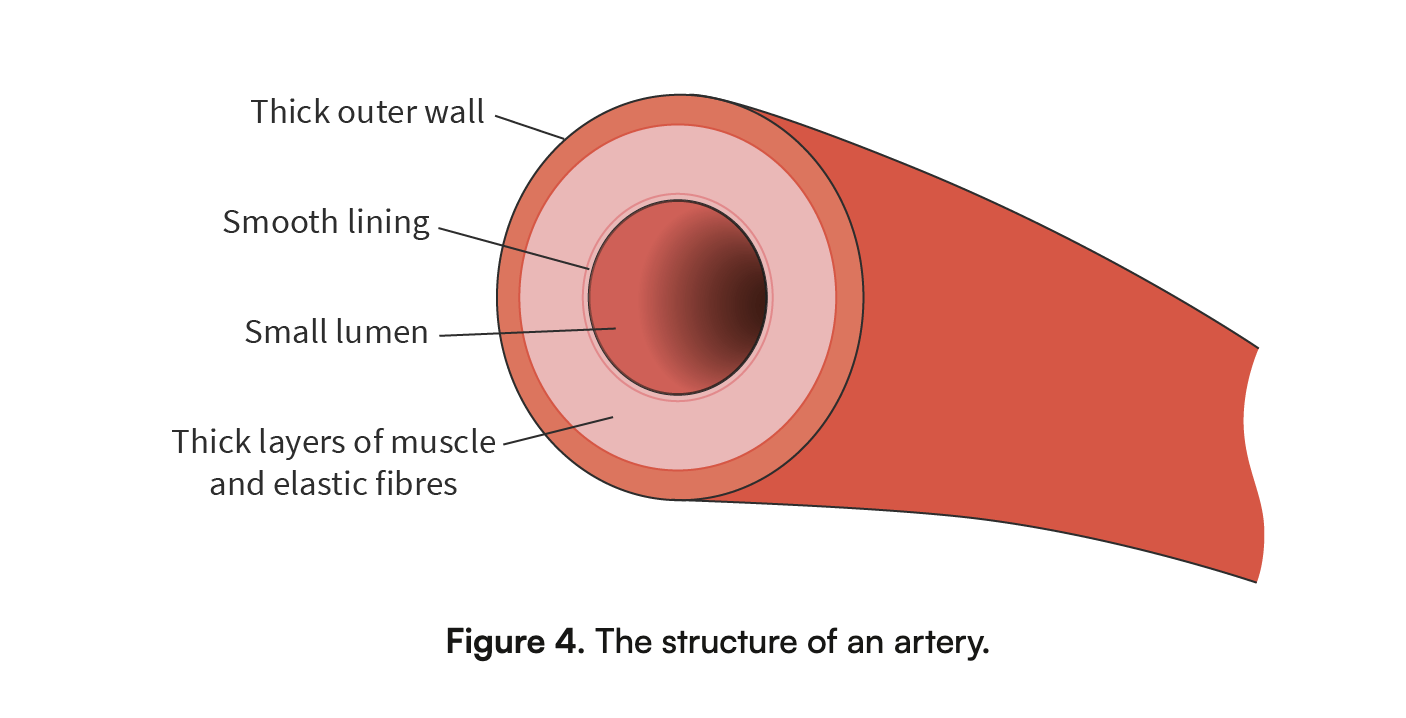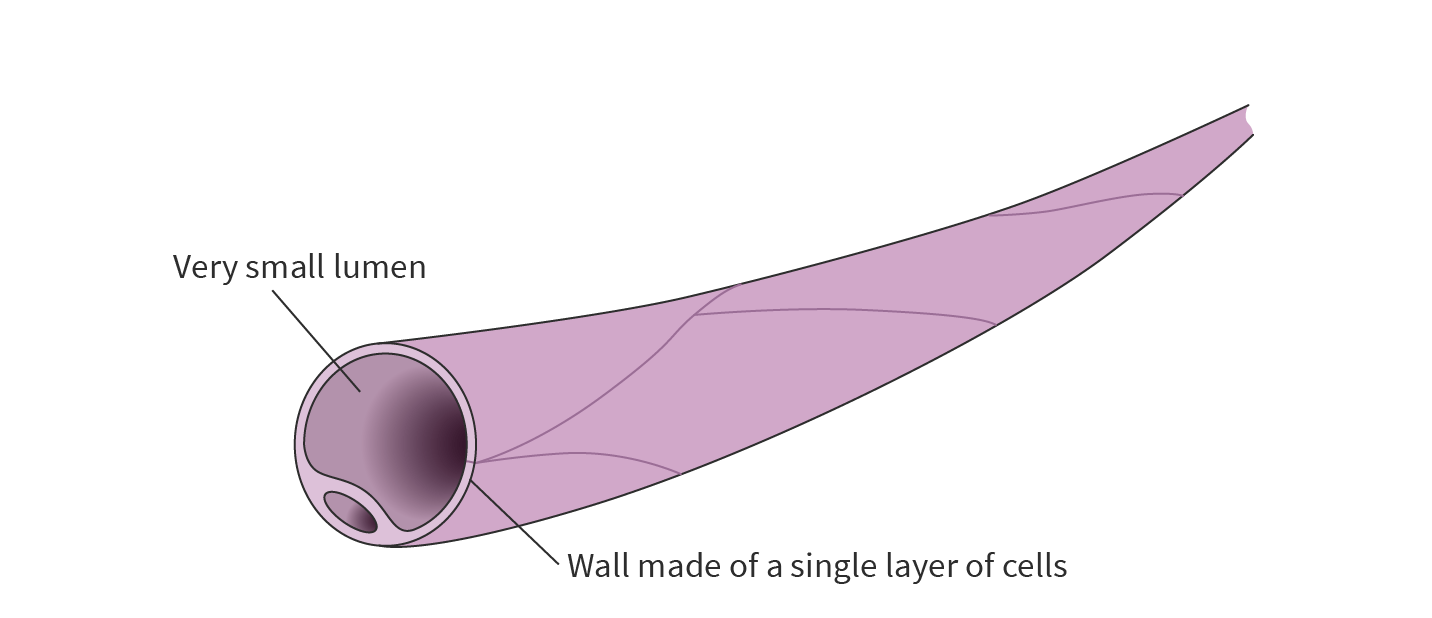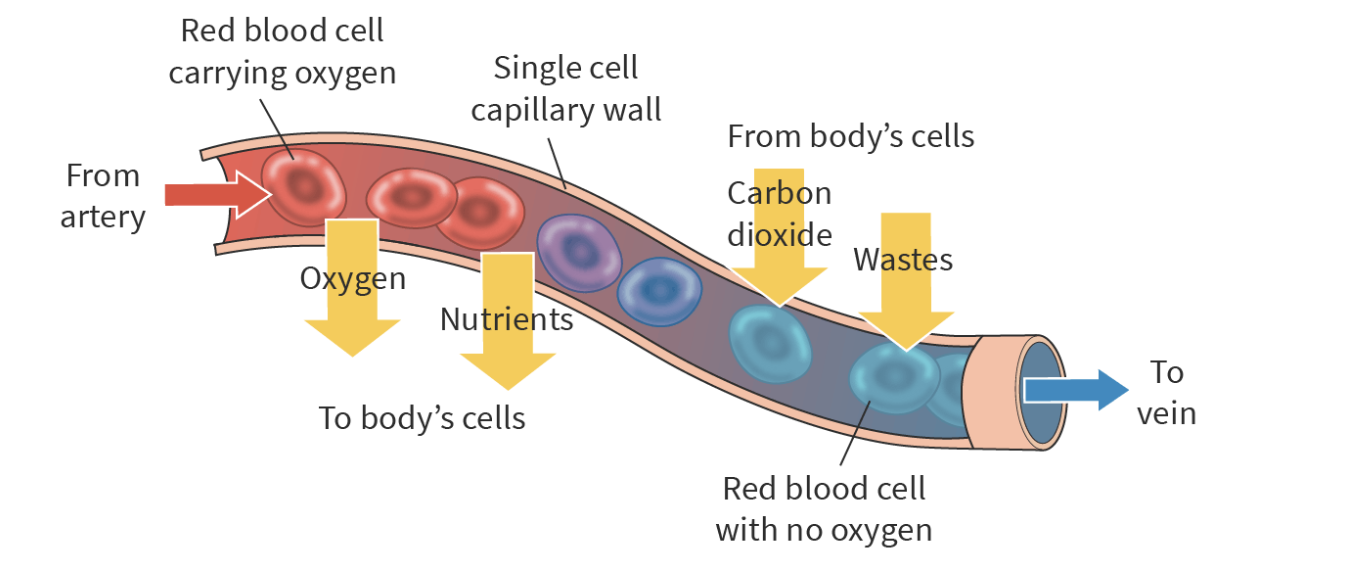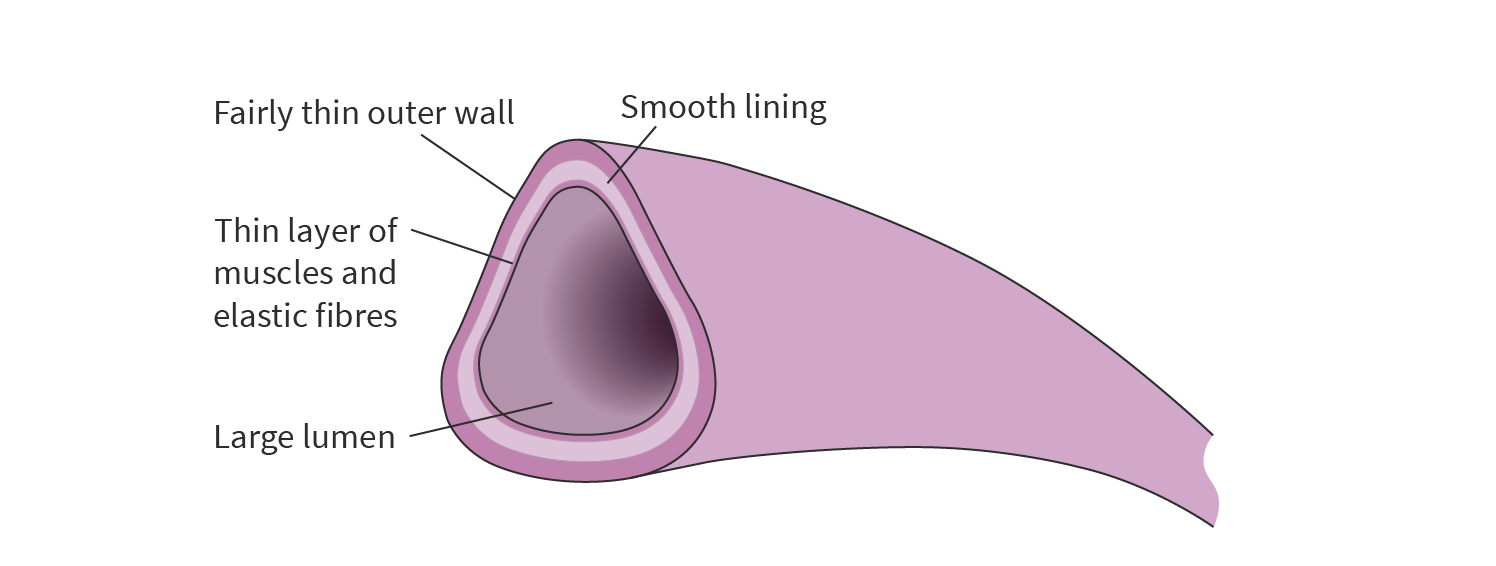B9.3 Blood vessels
1/6
There's no tags or description
Looks like no tags are added yet.
Name | Mastery | Learn | Test | Matching | Spaced |
|---|
No study sessions yet.
7 Terms
What are blood vessels?
An extensive, interconnected network of hollow tube-like structures through which blood flows through
Describe the structure of arteries
Carry blood away from the heart
Thick outer wall to withstand high blood pressure being pumped out the ventricles
They contain elastic muscle tissue that can stretch and relax with blood pressure changes

Describe the structure of the capillaries
Smallest type of blood vessel
They have thin walls (only a single cell thick) to:
Easily exchange substances (like nutrients + oxygen) with cells
Take away waste products (like CO2)
Capillaries have low blood pressure, so it flows more slowly

Function of capillaries
Provides oxygen and nutrients to the body’s cells
Release waste and carbon dioxide from the body’s cells

Describe the structure of veins
Carries blood to the heart
Relatively thin walls, largest lumen
Blood enters the veins after capillaries with lower pressure, so the walls don’t need to be very strong
They have valves to prevent backflow and keep blood moving towards the heart
Skeletal muscle contractions help push blood through veins toward the heart

What are the names of the main blood vessels to and from the heart?
Blood comes to the heart via:
Pulmonary veins (from the lungs)
Vena cava (from the body)
Blood goes from the heart via:
Pulmonary artery (to the lungs)
Aorta (to the body)
What are the names of the main blood vessels to and from the lungs?
Blood comes to the lungs via:
Pulmonary artery
Blood leaves the lungs via:
Pulmonary vein